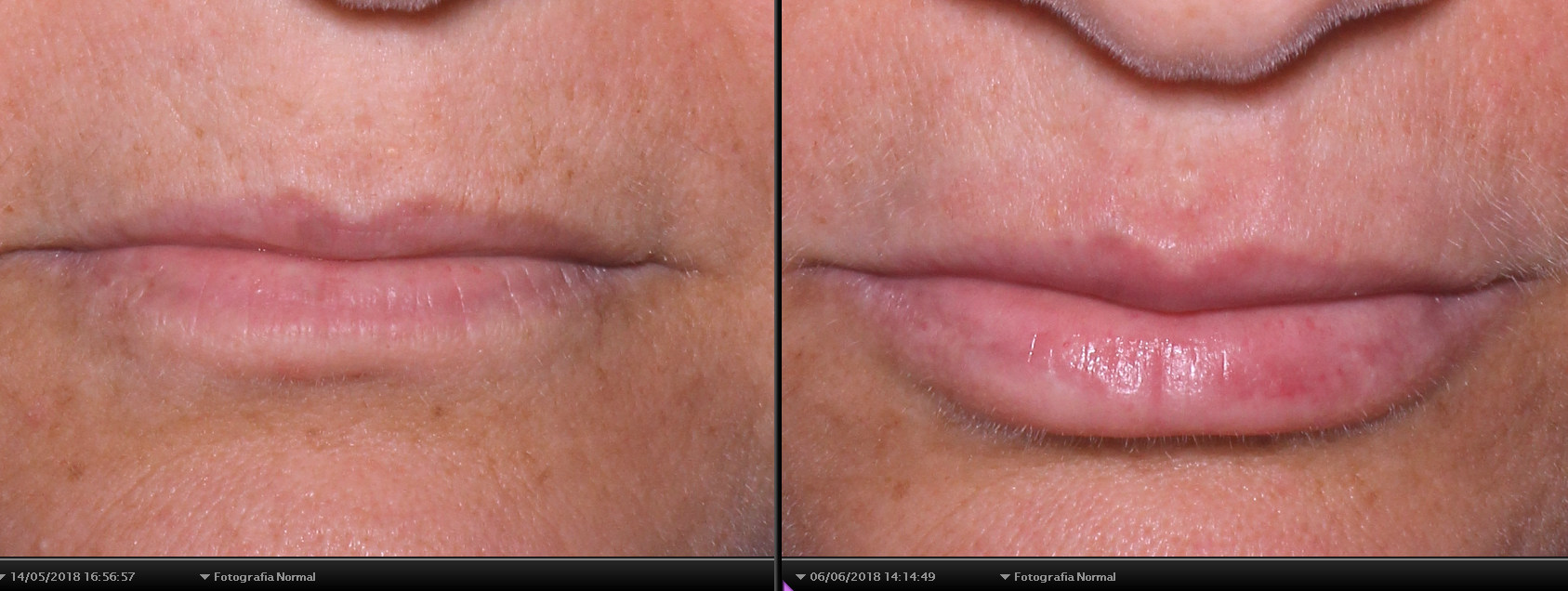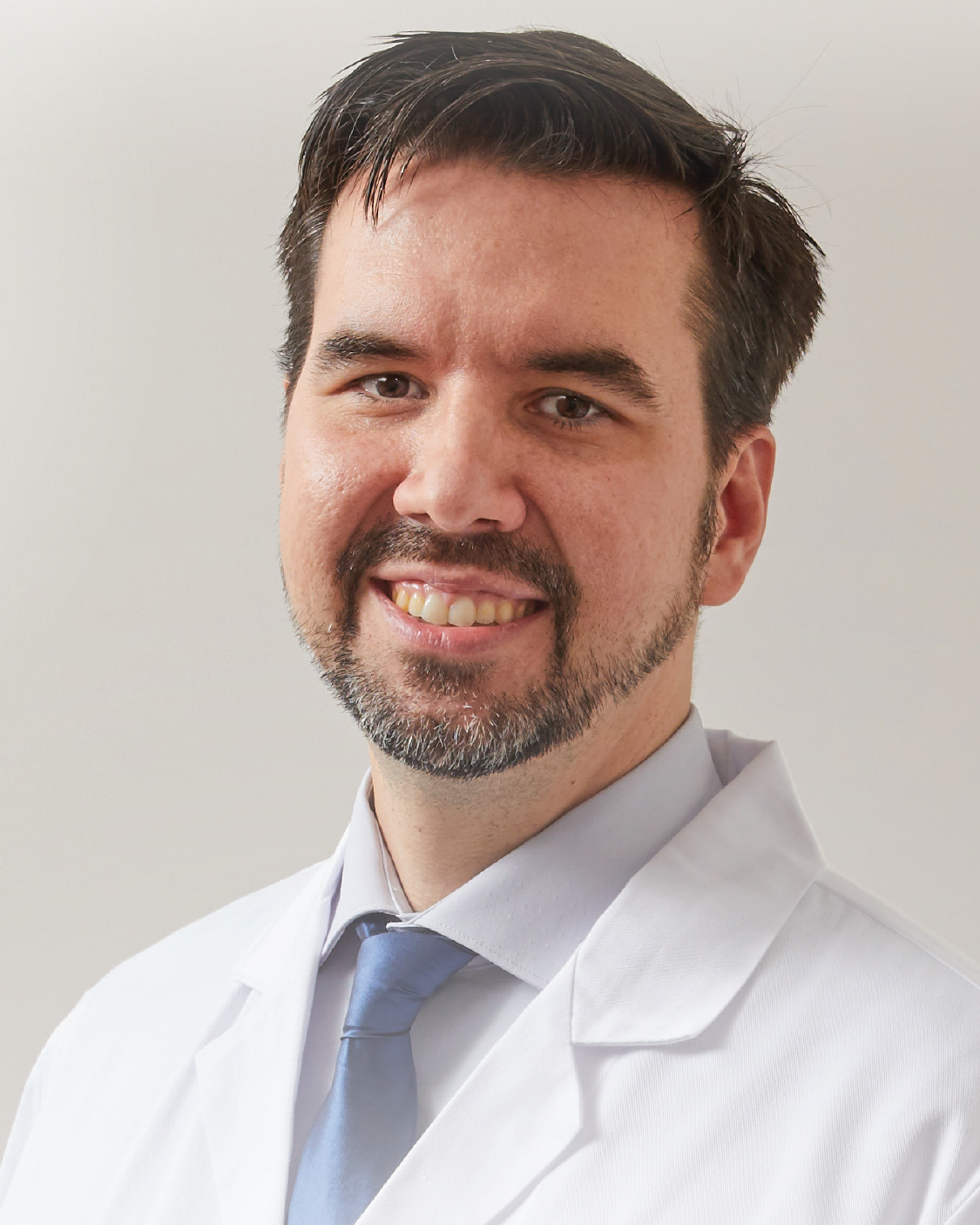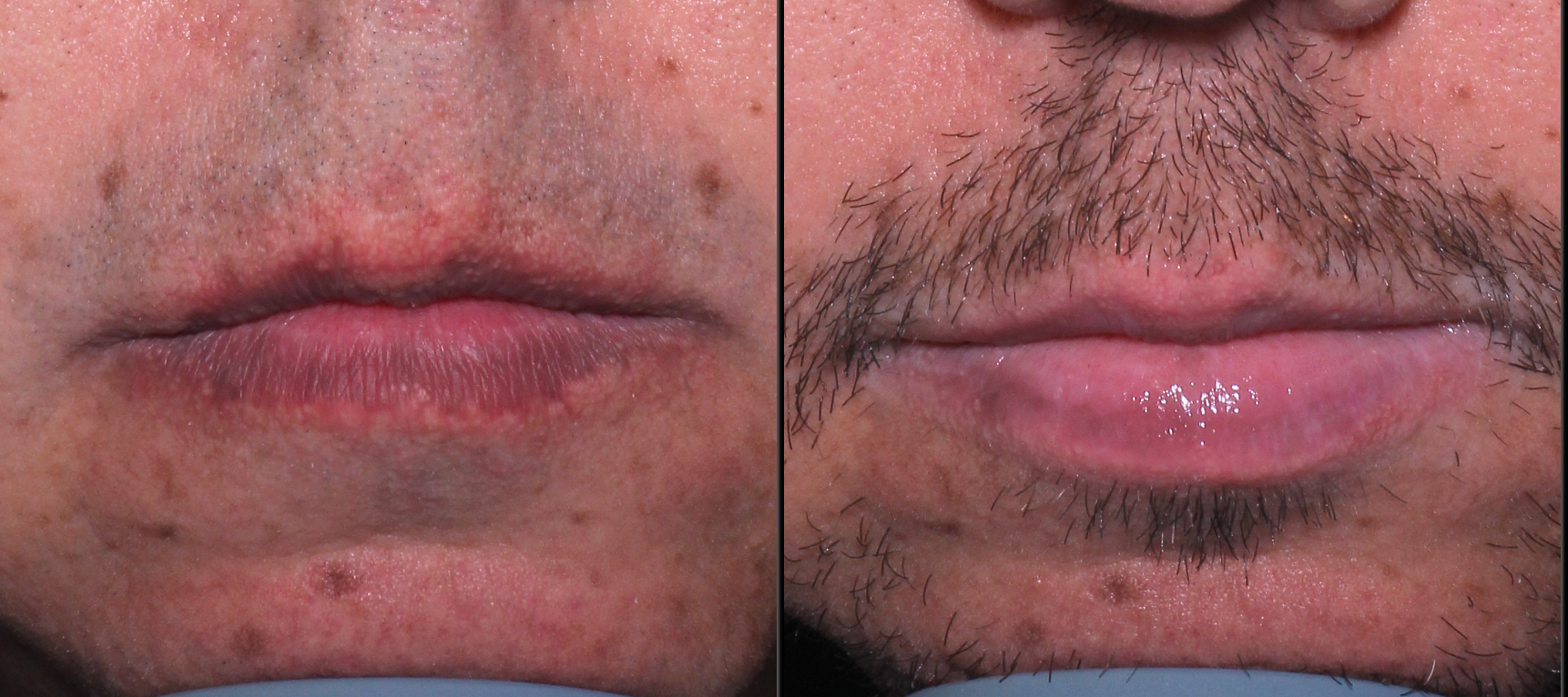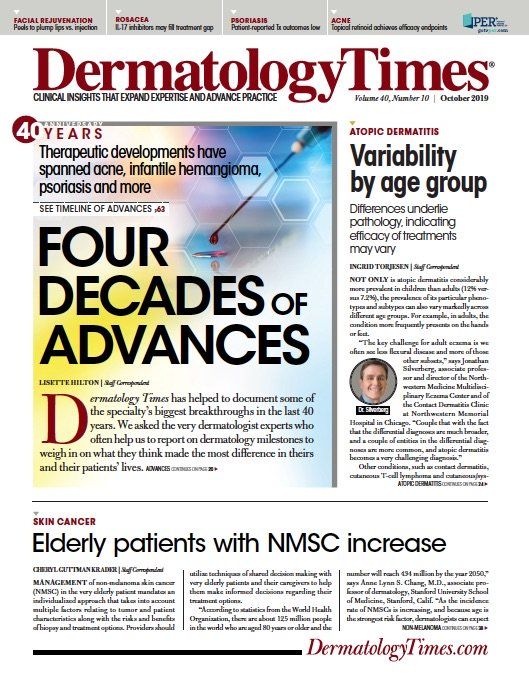- Case-Based Roundtable
- General Dermatology
- Eczema
- Chronic Hand Eczema
- Alopecia
- Aesthetics
- Vitiligo
- COVID-19
- Actinic Keratosis
- Precision Medicine and Biologics
- Rare Disease
- Wound Care
- Rosacea
- Psoriasis
- Psoriatic Arthritis
- Atopic Dermatitis
- Melasma
- NP and PA
- Skin Cancer
- Hidradenitis Suppurativa
- Drug Watch
- Pigmentary Disorders
- Acne
- Pediatric Dermatology
- Practice Management
- Prurigo Nodularis
- Buy-and-Bill
Publication
Article
Dermatology Times
Peeling the way to augmented lips
Author(s):
Can the lips be augmented without dermal filler injections? According to Carlos Wambier, M.D., Ph.D, the answer is a resounding “yes.” (And we’re not talking about Kylie’s infamous glass challenge...)
Female patient shown before and three weeks after phenol-croton oil peel to the lips. Photos courtesy Carlos Wambier, M.D.

Dr. Wambier

Male patient shown before and two weeks after a lip peel with phenol-croton oil. Photos courtesy Carlos Wambier, M.D.

Can the lips be augmented without dermal filler injections? According to Carlos Wambier, M.D., Ph.D, the answer is a resounding “yes.” And we’re not talking about Kylie’s infamous glass challenge. When reviewing results over time of full-face deep chemical peels that included the lips, dermatologists discovered that the lip tissues weren’t just rejuvenated, they were more defined and voluminous.1
Peeling offers anti-aging benefits that lip injections do not. “There are epidermal changes that take place [after peeling]. You make the lips look younger,” says Dr. Wambier, Department of Dermatology, Yale University School of Medicine. Not to mention, peeling the lips also stimulates collagen production and enhances lip definition, he says. Notably, however, peeling compared with injectable fillers doesn’t offer the same amount of control of the size and shape of the augmented lips.
Dr. Wambier presented on the topic of peeling the lips at the Peeling Around the World educational session that preceded the AAD Annual Meeting in Washington D.C. earlier this year. The session was hosted by the International Peeling Society.
Dr. Wambier’s presentation follows up research published last year in the Journal of the American Academy of Dermatology (JAAD).1 In the article, Wambier et al. offer a perspective on the phenol-croton oil chemical peel compared with HA fillers, today’s standard for lip augmentation. But why simply fill wrinkled, photodamaged lips when you could fully rejuvenate and naturally augment them?
Simply injecting the lips is like filling an old wrinkled pillow, says Dr. Wambier. In keeping with analogy, one could say that the peeling procedure delivers pillow fluffing service along with a fresh new pillowcase.
You could argue that peeling the lips is the ultimate way to rejuvenate and enhance their natural shape.
“The degree of lip augmentation achieved depends mainly on the individual size of the lips and croton oil concentration,” write the authors. Other lip anomalies, including actinic cheilitis and actinic dysplasia, can also be treated with the phenol-croton oil peel.
While some may use the classic Baker-Gordon phenol-croton oil peel with harshly stripping the skin of wrinkles and pigmentation, the formulas can be - and currently are - modified, using lower concentrations (with Hetter's formulas) to improve the safety profile while also delivering more natural-looking results.2
In Brazil, says Dr. Wambier, physicians classify chemical applications over the skin into two different categories: It's “chemical cauterization” when used to destroy something, like actinic cheilitis, and it’s “chemical peel” for cosmetic applications.
“There are three things the peel does,” explains Dr. Wambier.
First, “It changes the skin,” he says. Skin is fresh, new, revitalized, and importantly, without mutated cells.
Dr. Wambier believes the phenol-croton oil peel is a viable alternative to photodynamic therapy and other more expensive, painful and time-consuming treatments for treating precancerous lesions on the lips and around the mouth. He also notes, however, that there’s a need for studies to compare these treatment options.
Second, it everts the lips by vermilion retraction. Similar to the “Botox Lip Flip,” the peel creates the illusion of fuller lips by rolling out the upper and lower vermillion.
Third, it creates volume. “Volume is related to the surface area of the peel,” says Dr. Wambier. “So, if you peel a small surface area, there would be less collagen formation. More surface area, more collagen.”
In other words, if a patient has thin lips with a straight surface, they don’t have enough surface for noticeable results.
In such cases, an injectable filler may be appropriate as an add-on procedure if the patient desires larger or differently shaped lips.
The perfect candidate, he says, is someone that has aging lip skin, with a large surface area. “They will get a lot of volume and get eversion,” he says.
But the lip peel isn’t for everyone. Dr. Wambier says it’s contraindicated in those with autoimmune diseases, active cancer or any carcinogen exposure, including smokers.
Although phorbol esters found in croton oil are known to trigger cell differentiation and also have anti-cancer and pro-inflammatory properties, they are mainly mediated by Protein Kinase C activation, the same pharmacological mechanism of ingenol mebutate (topical treatment for actinic keratosis).3 Protein Kinase C also causes cell proliferation (like a fertilizer). If used in the wrong environment, such as co-exposure to carcinogenogenic chemicals or radiation, phorbol esters promote tumor growth.4
Learning About the Lip Peel
Dr. Wambier says he doesn’t believe the active ingredient in these deep peels is part of the general knowledge in dermatology. “The formula that we use that creates this magic - it’s not because of the phenol; it’s not because of water; it’s not because of soap – it’s the croton oil.”
Derived from the seeds of the Croton tiglium tree, which is native to Indonesia, Dr. Wambier describes croton oil as a stem cell stimulant and says this property is what’s responsible for rejuvenating the skin. Phenol, he says, is the ingredient needed to carry the active properties of croton oil deep into the tissues. Phenol is very effective at coagulating old superficial cells and the superficial drainage system: capillaries and lymphatic. Without phenol, the croton oil would only have very superficial effects, and its active substances would be instantly absorbed to the systemic circulation.
When performing the lip peel, Dr. Wambier uses Hetter’s formulas (phenol + croton oil) after applying topical anesthesia with 2% to 4% lidocaine. After degreasing the skin to get optimal penetration, Dr. Wambier spreads the solution on the lips using a swab.
Technique considerations include saturation, pressure and number of passes. Saturation can be wet, moist, semi-dry. The drier the saturation, the more passes you’ll need to perform. And the harder you press, the more the peel is absorbed. For lip eversion, the peel needs to be applied to the vermilion boarder.
Although Dr. Wambier uses a wet technique, he says this should be reserved for the experienced lip peeler. “The dry technique is safer, but you have to apply more layers, do more rubbing.”
But the extra work far outweighs the possibility of complications, he stresses. If the solution gets in the mouth, the tongue swells and is very painful for the patient.
“Rubbing,” adds Dr. Wambier, “is part of the art of peeling.”
Getting Started
According to Dr. Wambier, many dermatology residency programs do not have a history of teaching the chemical peel.
“For those who haven’t had that [hands-on training] in residency, they should look for a hands-on workshop,” says Dr. Wambier.
There are many, he says. Before coming to the U.S., Dr. Wambier gave monthly workshops on peeling in Brazil. He knows of a plastic surgeon in the Portland, Oregon, area and another in Germany who give regular workshops. Then there’s the big theoretical plus hands-on workshop provided by the International Peeling Society annually in conjunction with the AAD. Dr. Wambier has plans to begin offering lip peel training in 2020.
Physician or resident, he says hands-on, supervised training helps to avoid the potential for mistakes when mixing and using chemical peel formulas.
“Dermatology residency programs should teach chemical peeling in general, and the lips are a good place to start because the area is so small, and healing is fast,” says Dr. Wambier.
Disclosures:
Dr. Wambier has been an advisor for Allergan and Young Pharmaceuticals, a speaker for Galderma and Cynosure, and an investigator for Pfizer, Concert and Eli-Lilly.
References:
- Wambier CG, Neitzke IC, Lee KC, et al. Augmentation and eversion of lips without injections: The lip peel. J Am Acad Dermatol. 2019;80(5):e119-e120.
- Wambier CG, Lee KC, Soon SL, et al. Advanced chemical peels: Phenol-croton oil peel. J Am Acad Dermatol. 2019;81(2):327-336.
- Wambier CG, Lee KC, Bertolini TM, Rullan PP, Beltrame FL. Comment on "Anti-aging effects of ingenol mebutate for patients with actinic keratosis" and phenol-croton oil peelings. J Am Acad Dermatol. 2019;80(6):e185-e186.
- Bertolini TM. Is the phenol-croton oil peel safe? Plast Reconstr Surg. 2002;110(2):715-7.






